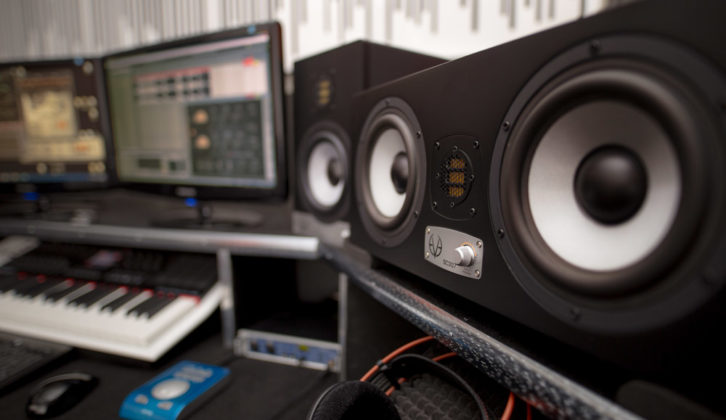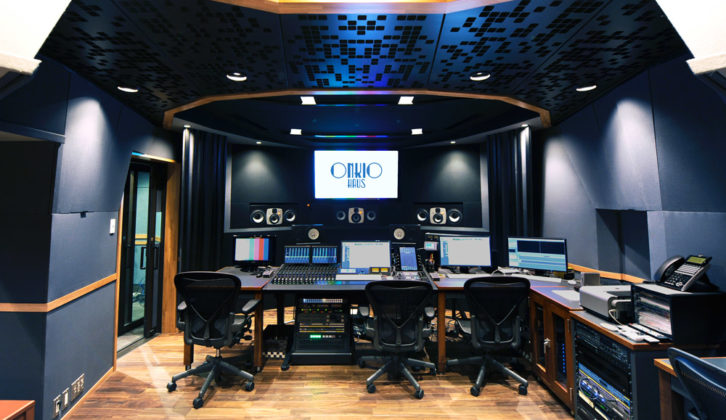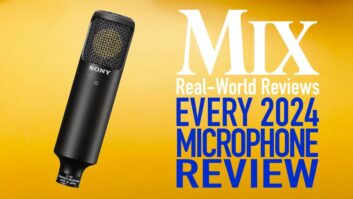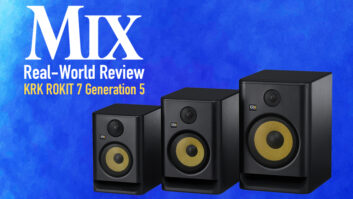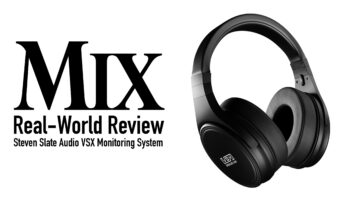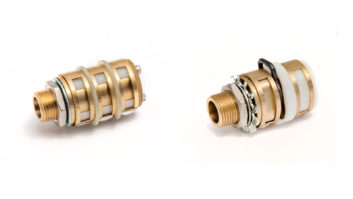There’s nothing harder than accurately reviewing monitors; the disturbance to the most important link in our studio’s audio chain, interaction with the room, breaking-in periods, the gradual familiarization necessary.… Lots of concerted effort is required for an effective review.
So I hope you can appreciate this unusual review of Eden’s SC207 nearfield monitor, where I simply unboxed them, placed them (a bit inappropriately) atop my favorite Neumann KH310 three-way mid-fields and felt comfortable to mix on them in mere seconds! For me, in my well-tuned, nicely diffused basement studio, they just simply sounded right … and continued to do so.
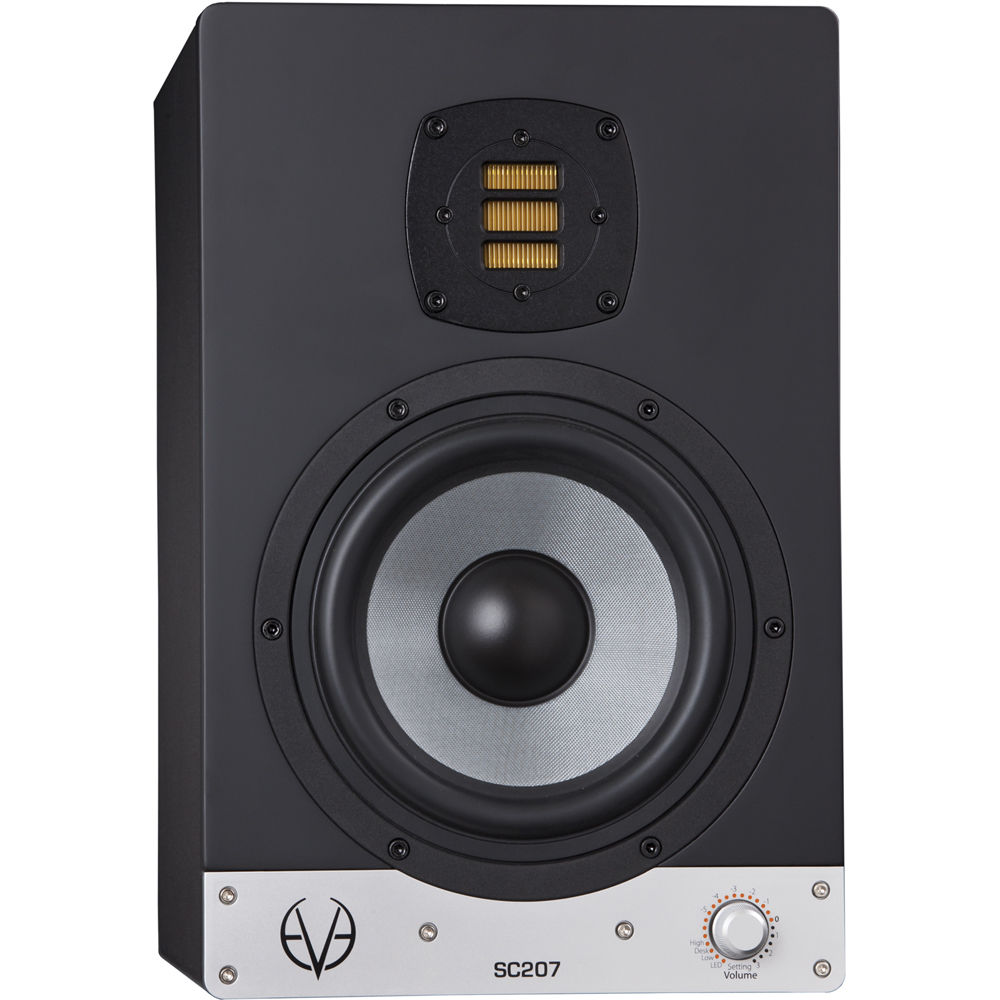
The SC207s employ Eve’s 6.5” SilverCone honeycomb woofer, which is driven by a “copper cap magnet system,” thrust by a 1.5” voice coil and delivers an impressive 44 Hz lower frequency response. A large, rectangular rear port (with no sharp edges, to reduce “chuffing”) reportedly reduces bass distortion. A 100-watt PWM (pulse width modulation) amp drives the woofer, along with a 50-watt amp for the AMT (Air Motion Transformer) RS2 folded-ribbon tweeter. Together, 106 dB (SPL at 1 meter) is achieved.
DSP is a big part of many a modern, self-powered monitor’s success, and the 207s offer three filter points for fine-tuning via a single ring-of-LEDs-paired knob—a low shelf at 300 Hz (range from -5 to +3 dB); a high shelf at 3 kHz (again from -5 to +3); and a “desk filter” (helps negate low-mid buildup from desktop reflection/diffraction) that is quite interesting in its flexibility. This filter is at 80 Hz for boosting (up to +3) and positioned at 170 Hz for cutting (-5 dB max). The DSP section is fed by Burr-Brown A/D conversion at 192 kHz for accuracy and directly feeds the PWM amps without further conversion. You can find more details on Eve’s website. A pair of SC207s will run you about $1,400 per pair, street.
Related: EVE Audio Video Tour, Pro Sound News, Sep. 28, 2017
I’m quite familiar with the unique response of ribbon tweeters, especially from my previous reviews of ADAM Audio monitors—Eve’s founder was a founder of ADAM as well—yet I was still unprepared for just how natural these 207s sounded. That characteristic “extremely detailed, yet extremely smooth” ribbon tweet response massaged my ears with nicely balanced and imaged vocals, snare drums and midrange instruments—all strength areas for folded-ribbon designs.
Once I realized that I was hearing trustworthy and familiar midrange (Eve crosses over between woof and tweet at 2,800 Hz—a little high but without much perceivable dip at the crossover point), I began to focus on the bass response. I had to check my eyes because I was seeing a 6.5” driver but I’d swear I was hearing an 8- or 10-incher. Allow me to stress this point: I was hearing nicely extended bass, with good consistency across the range, and it had the right “texture” (punchy, tight, defined) too. No “one-note bass syndrome” here!
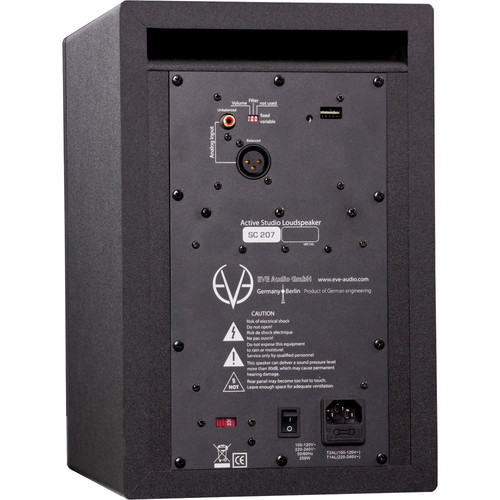
After a week of getting acquainted, and while they were still mounted atop my Neumann three-ways, I began to try some DSP adjustments. At first the single knob seemed difficult to adjust, but once I grew accustomed to its multifunction ergonomics, I found it to be a pleasure to use. Half-dB adjustments gave me the finite accuracy I desired and proved to be adequate for room tuning. Now quite impressed, I moved the 207s into my hallowed mains position, proceeded to complete my EQ tweaks and get ready for work without my usual mains. (A little scary, I know, but it’s all for you, my dear readers!) After much wrangling, all I adjusted was the desktop filter, with a slight 0.5 dB boost. I can see how the 170 Hz filter point could be quite useful and I remain impressed that they sound so good and flat with only one small adjustment. Work went on successfully without disruption.
Related: Galactic Playground Music Switch to EVE Audio Monitors, Pro Sound News, Aug. 8, 2017
I have been reviewing gear since 2007, and although I am quick to find usefulness in most all products, I do not hand out superlatives easily, or engage in hype, of declare “best of class” without careful consideration. Despite this, I will still name these Eve 207s as the best ribbon-tweeted nearfields I’ve heard. They have excellent dynamics, flat response, great imaging, powerful bass reproduction, more even vertical and horizontal dispersion than typical for a folded-ribbon tweeter and, most of all, a relaxed, natural and trustworthy midrange reproduction that requires no decoding, learning or translating.
Exhibiting at the NAB Show? Enter the NewBay Best of Show Awards! EXTENDED DEADLINE: MARCH 30!
I tested the SC207s in my large control room, where they created enough SPL to please clients at the couch. Based on my current and previous experiences, I’d say these versatile little nearfields will excel at music production in smaller project studios, are excellent for “pure voice” VO and audiobook projects, provide an excellent alternate point of reference for big rooms, and would be a fine choice for production trucks and other location apps where this much quality sound in this small a package is indeed a very, very good thing.
These are mid-market-priced monitors with top-of-market performance, and I recommend them highly. Now I need to hear Eve’s three-way 307s, four-way 407s and 3010 mains, because if the 207s can impress this much, these Berliners may really be on to something.
Eve Audio • eve-audio.com
